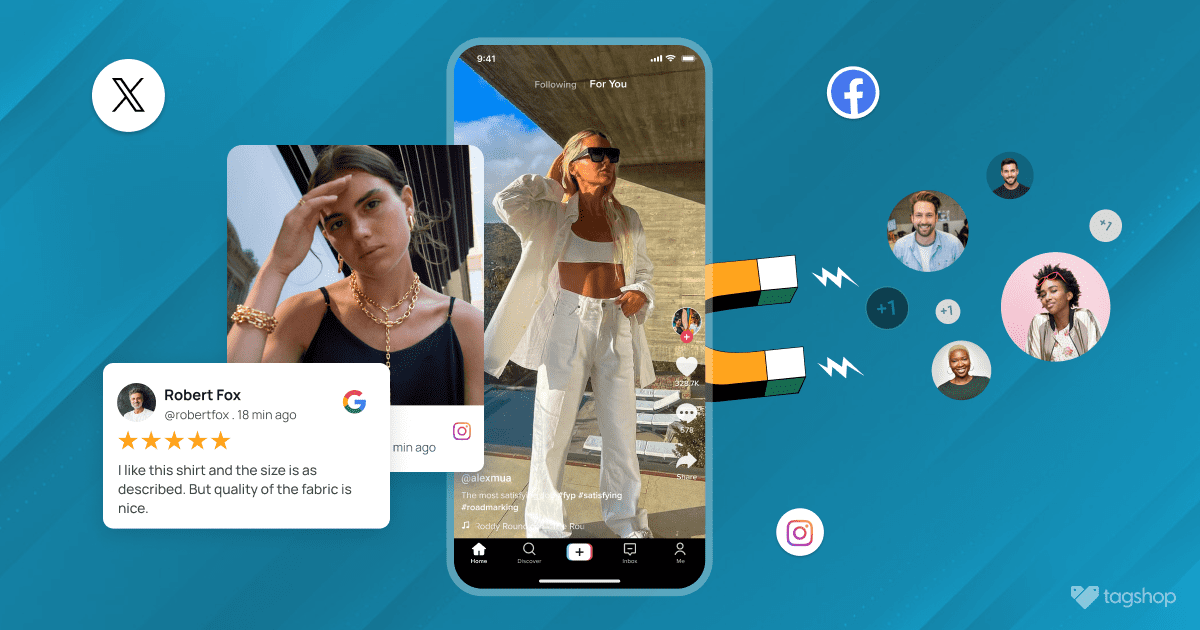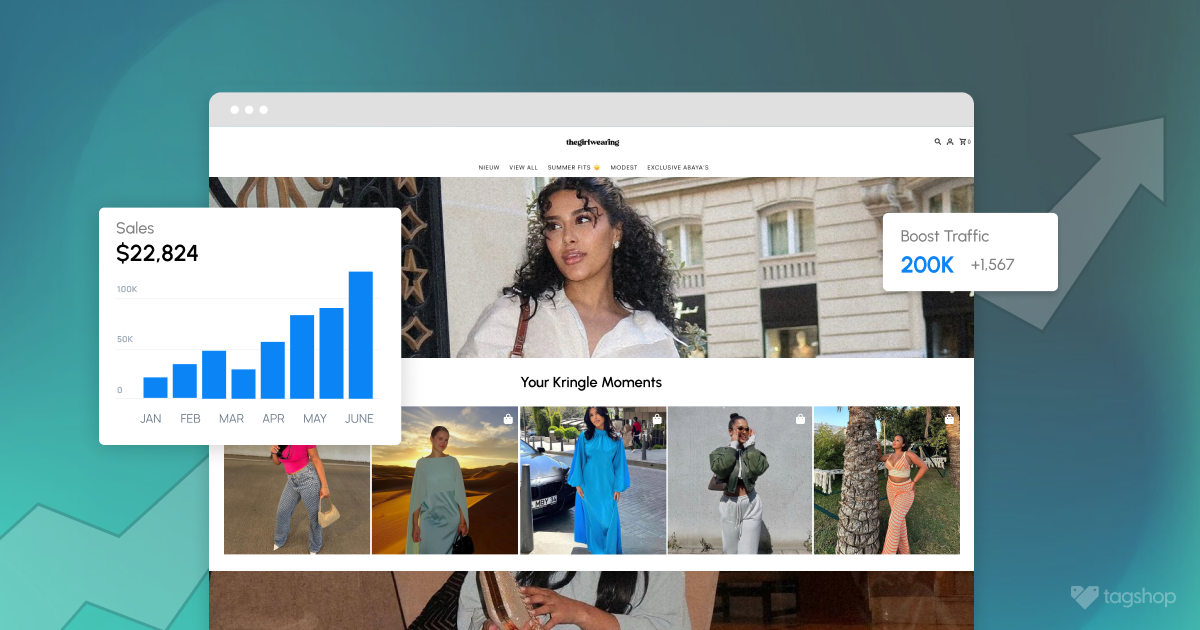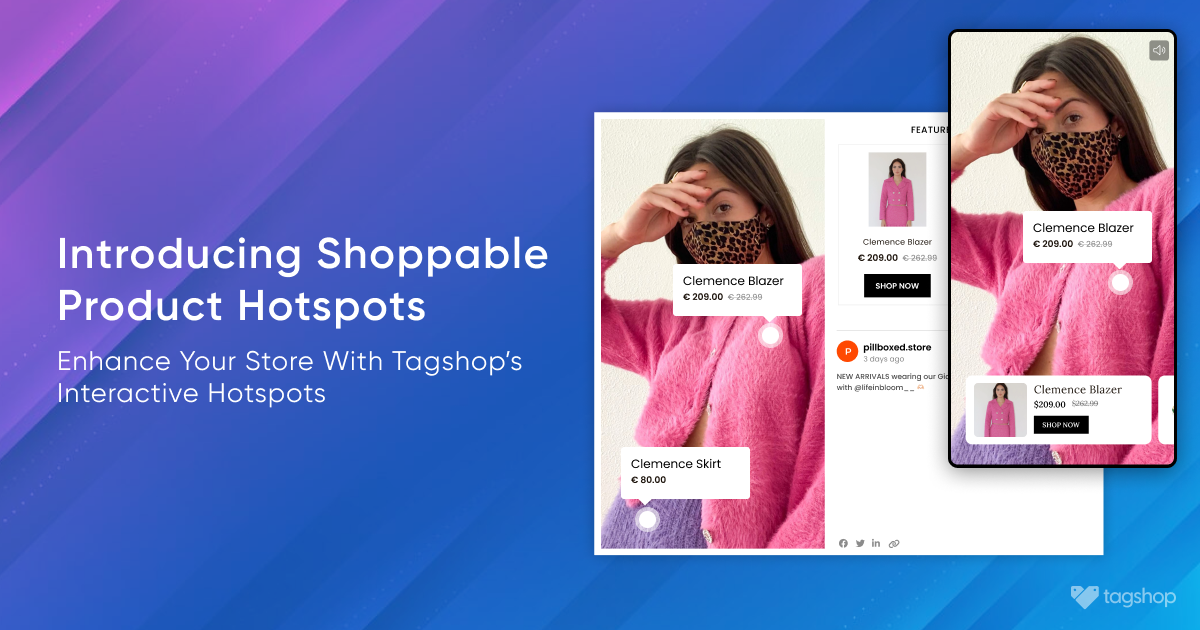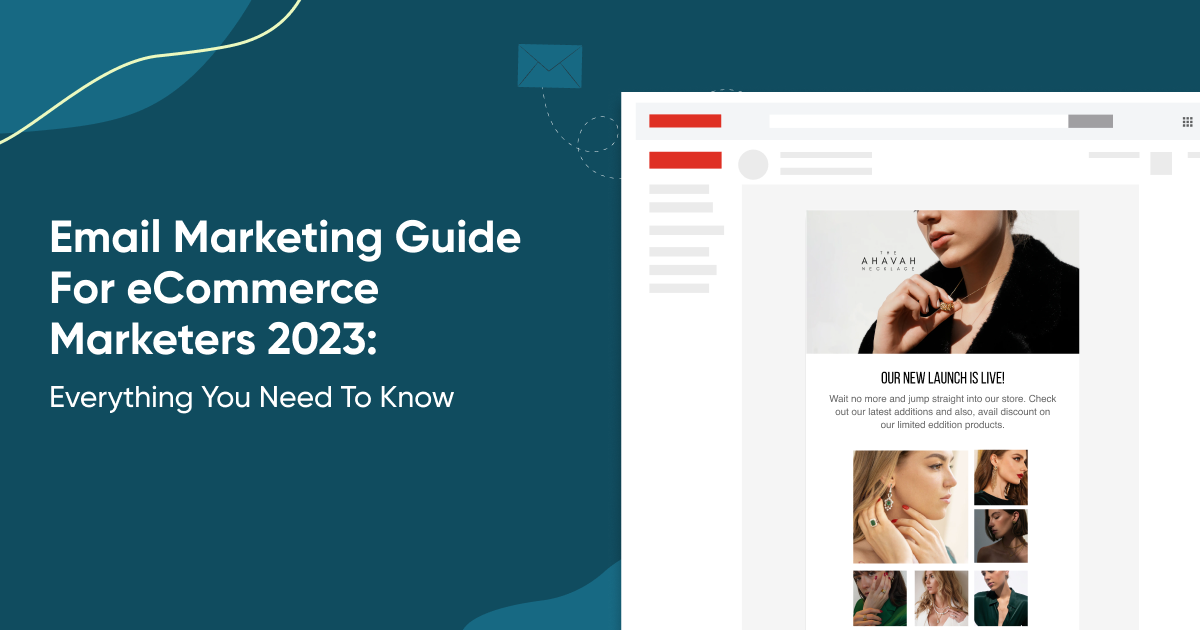Inbound Marketing for eCommerce: Strategies that Works
How does an eCommerce business become successful? As simple as that question is, the solution involves a combination of efforts. For any eCommerce business to be profitable and revenue-generating, brands must inculcate powerful marketing strategies that can help in 3 things:
- Communicate the brand’s offerings effectively.
- Build a trusted relationship with customers.
- Constantly improve the brand’s reputation for repeat purchases.
These three significant factors make eCommerce successful in terms of sales and growth. Various strategies exist. However, inbound marketing for e-commerce stands out as the most effective one due to its cost-effective ability to attract visitors, build relationships with them, and turn them into customers.
Let’s begin by understanding what inbound marketing for e-commerce means.
What is Inbound Marketing?
Here’s a simple definition: Inbound marketing is a promotional strategy for e-commerce businesses that focuses solely on targeting and attracting customers based on the value your business provides to the customers.
This type of marketing does not rely on reaching out to customers or communicating your specific needs to them through outbound sales methods like cold calling and webinars.
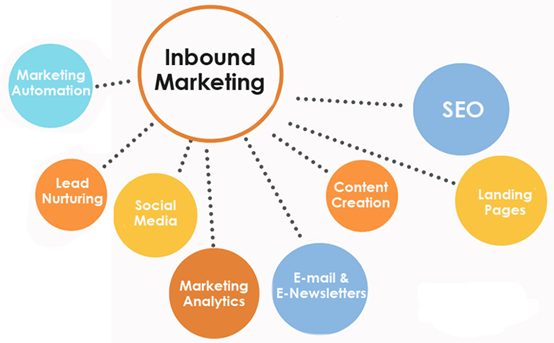
Instead, businesses attract customers by creating valuable content and experiences tailored to them. This may include blog posts, videos, ebooks, or case studies. In more advanced marketing, content like UGC, influencer marketing, and personalized email marketing are core components of inbound marketing.
Why is Inbound Marketing Essential for E-commerce Brands?
Inbound marketing has played a crucial role in the success of e-commerce businesses for several seasons. Since 2020, the e-commerce industry has grown enormously.
Statistics show that there are over 26.5 million e-commerce websites worldwide. Even more remarkable is that between 2019 and 2023, the number of e-commerce sites surged by a remarkable 204%, from 9.2 million to an astounding 26.5 million.
While relying on basic e-commerce strategies is paramount and essential, retrieving the same results from these strategies has become a bit more complex. Here are some reasons why inbound marketing for e-commerce is the strategy that can help brands grow.
1. Attract Potential Customers
Inbound marketing focuses on promoting a brand’s products or services through valuable content that effectively communicates the brand’s offerings.

Content such as engaging social media posts, videos, or informative blog posts attracts potential customers who are already interested in your products or services. By producing such content and promoting it to address their needs, questions, and interests, you can drive targeted traffic to your e-commerce site.
2. Boosts Qualified Web Traffic
Inbound marketing involves promotions through content like blog posts and articles. By creating value content, especially search-engine-optimized content, eCommerce brands can easily improve their visibility on platforms like Google and establish themselves as thought leaders.
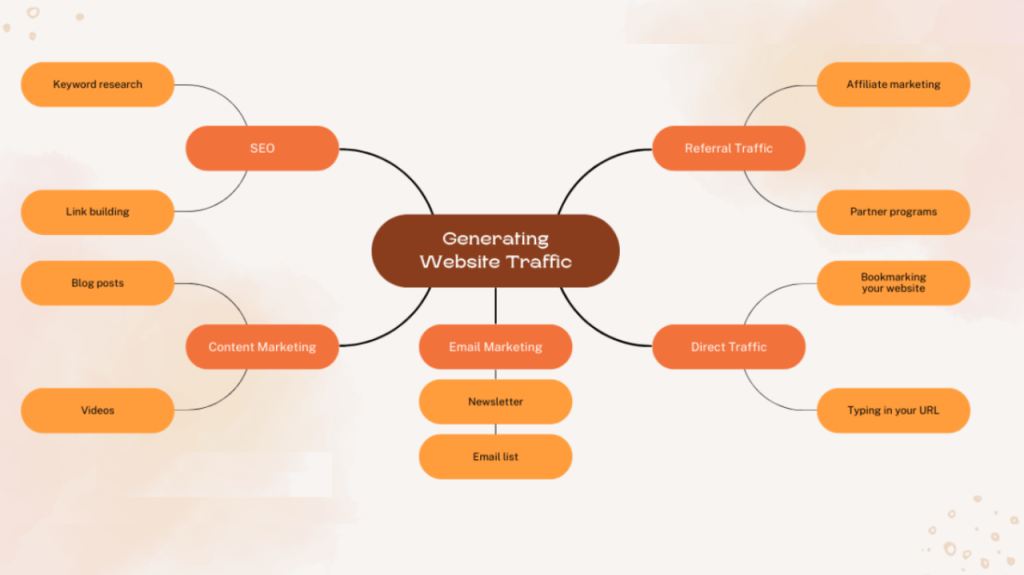
When customers find helpful answers to their questions through a brand’s content, they’re more likely to trust the brand and become a valued customer. Customers are also more likely to invest high value in a brand they trust, leading to more sales.
3. Cost-effective & Measurable
Another significant advantage of inbound marketing is its cost-effectiveness. Unlike traditional marketing, where advertising costs are soaring high, or outbound marketing, which requires high personalization, inbound marketing works by offering valuable content to customers that can be reused and act as a promotional resource without any depletion.
Inbound marketing for e-commerce can also be tracked to measure the effectiveness of your campaigns. With tools like Google Analytics and Ecommerce CRM systems, you can monitor key metrics such as website traffic, conversion rates, and customer engagement to optimize your strategies for better results.
4. Improves Sales & Revenue
Providing valuable and informative content helps build trust and credibility with your audience, and inbound marketing helps you achieve that. Brands utilizing content like authentic UGC, product demonstrations, reviews, and testimonials can boost any e-commerce brand’s authenticity.
When customers see you as a reliable source of information, they are more likely to purchase from you and become loyal customers, eventually improving sales and revenue.
5. Adaptability & Scalability
Another great benefit of inbound marketing strategies is that they can be easily adapted and scaled to fit the needs and goals of your e-commerce business. Whether a small startup or a large enterprise, you can tailor your inbound marketing efforts to reach your target audience and achieve your objectives.
Small-scale businesses can rely on accessible content such as blogs and social media posts to improve their revenue; on the other hand, large-scale businesses can produce quality content in bulk quantities and spread out their promotion to scale their visibility.
Core Stages of Inbound Marketing for eCommerce
By now, you must have a clear understanding of the advantages of relying on inbound marketing and its essentiality for e-commerce businesses to grow a business. Moreover, it is a customer-centric approach that aligns with the modern buyer’s behavior and preferences, making it a highly effective and sustainable strategy for businesses across various industries.
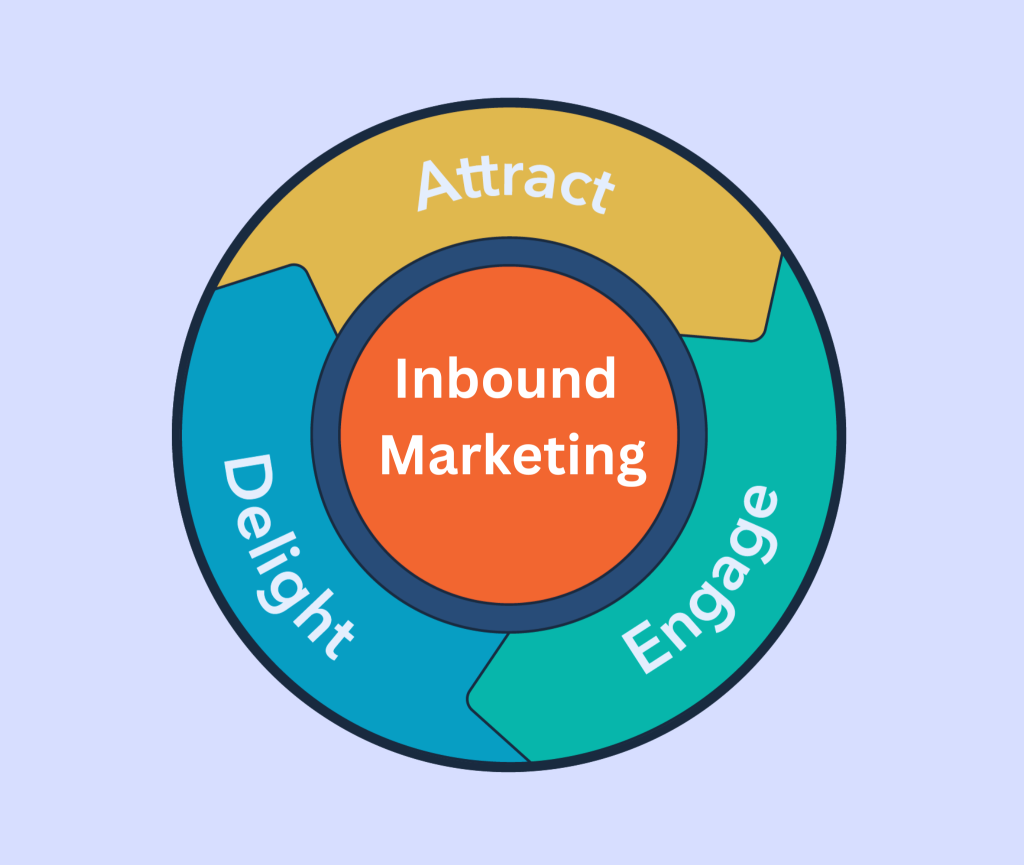
However, it is crucial to understand the core stages of inbound marketing before incorporating it entirely into your marketing strategy.
Here are the three main stages of inbound marketing.
- Attract potential customers.
- Engage and convert them into buyers.
- Delight them and retain them.
1. Attract
The first stage of successful inbound marketing is the ‘Attract’ stage. Here, brands create content and implement promotions to attract new customers towards the brand by showcasing exciting and relatable content.
A. SEO Friendly Blogs
When gaining visibility on search engines like Google, posting well-optimized blogs and articles is the most effective way. Inbound marketing is all about creating valuable content that can help e-commerce businesses connect with their customers and provide them with engaging information regarding their offerings.

By writing and publishing search engine-optimized blogs, brands can maintain their visibility on Google and improve their website traffic. Add links to your website and blogs to your digital business card to expand your reach and give everyone in your network easy access to your content. Additionally, businesses can integrate actionable CTAs that redirect users from the blog to other significant touchpoints.
B. User-generated content
User-generated content (UGC) is a powerful and authentic form of content. It includes social proof such as reviews, testimonials, and customer-generated visual content posted on platforms such as Instagram, YouTube, or Facebook. eCommerce brands can utilize UGC to improve the store’s visuals and make it seem more credible.

How? Many shoppable UGC platforms allow businesses to collect content and curate shoppable galleries. Users can then embed this gallery into their e-commerce touchpoints.
C. Social media
Social media has become an integral part of marketing nowadays. E-commerce businesses across niches and industries are utilizing social media to boost visibility and monetize their presence on the platforms, gaining more audience and improving conversions.

What’s more is e-commerce brands can utilize shoppable links in bio tools to redirect their social traffic to their e-commerce store. This practice has helped numerous businesses generate 3X sales and ROI from social media.
2. Engage
The second stage of inbound marketing is to “Engage” the customers. Once you have brought them to your website, it is time to focus on nurturing the lead and converting the potential customer into a buyer.
A. Email marketing
Email marketing is one of the most value-driving marketing strategies in e-commerce, especially inbound marketing.
With the help of personalized emails, e-commerce brands can easily engage their customers and offer exclusive discounts, coupons, or buying inspiration. Email marketing is a brilliant tactic to boost customer engagement and monetize it. Incorporating lead nurturing emails into your strategy can further enhance customer relationships and drive conversions.
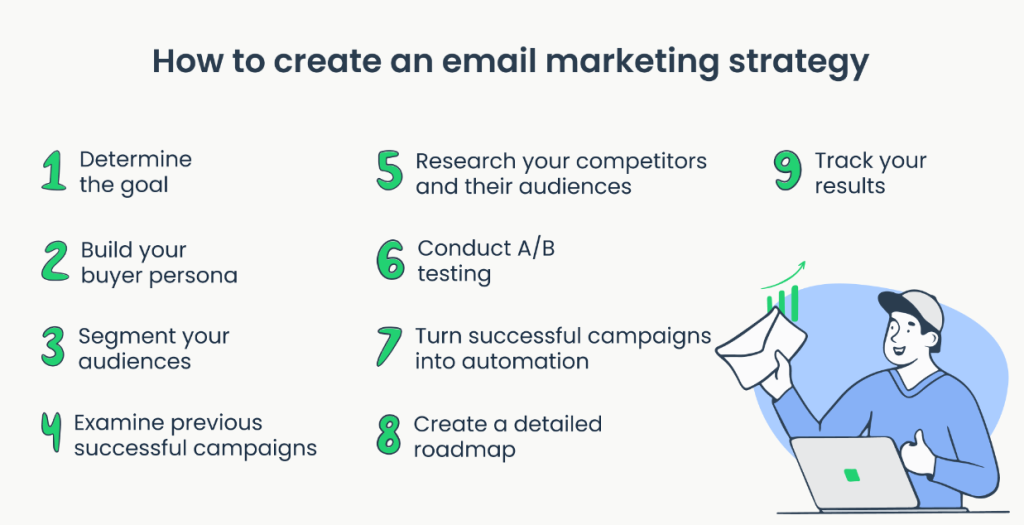
Additionally, many tools support users in hosting shoppable email marketing campaigns. Brands can embed content into emails and turn them shoppable, allowing recipients to explore and purchase products within a single interface. Others might use a targeted LinkedIn email finder to easily find the emails of their prospective leads and make their marketing and sales efforts more effective.
B. Engaging Product Discovery
Engaging product discovery methods, such as personalized product recommendations, visually appealing product catalogs, and high-quality videos on the website, can create an interactive shopping experience for customers.
Inbound marketing is about attracting customers with valuable information, engaging them to stay with the brand, and retaining them to perform some action. Immersive product discovery contributes significantly to this.
C. Live chat
Responsive customer support is another aspect of successful inbound marketing. Responding promptly and helpfully to customer inquiries, concerns, or issues demonstrates that you value and prioritize your customers’ needs.
Using a live chat agent enhances your responsiveness, which builds trust and credibility with your audience, fostering positive relationships and enhancing brand reputation.
3. Delight
This final stage of inbound marketing involves rewarding customers for purchasing from you. It is crucial for retaining customers and boosting repeat purchases.
A. Build a Community
The most crucial post-purchase marketing strategy is to build a community with your customers. People like to feel like they belong and are a part of a valued community.

You can offer them an exclusive coupon for their next purchase with your, or go beyond the purchasing experience and send a thank you note or show gratitude for trusting your brand.
B. Reviews & Testimonials
The main goal of the e-commerce business in the final stage of inbound marketing is to please the customers. This is to retain them and boost their lifetime value with the brand. Businesses make customers feel valued and heard by asking for reviews and testimonials.
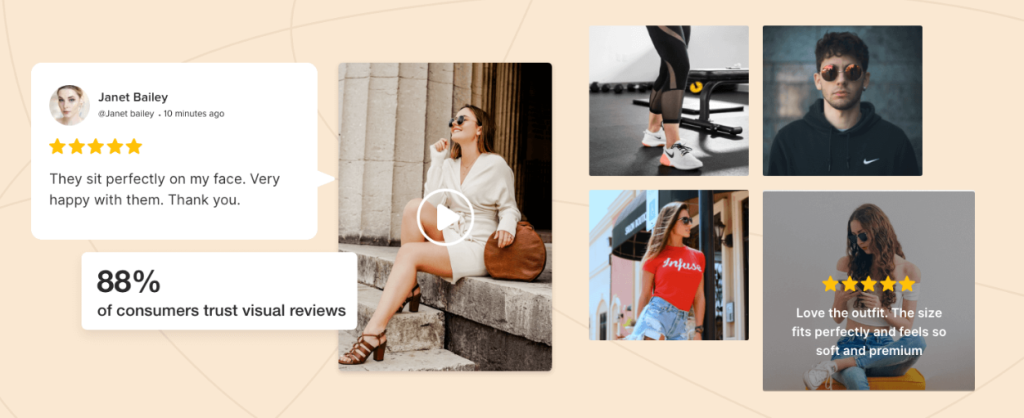
Additionally, it allows the customer to analyze your products honestly and give you authentic feedback, which brands can use to improve their offerings and leverage the positive reviews on essential landing pages to attract more customers.
Building a Successful Inbound Marketing Campaign for eCommerce
Inbound marketing for e-commerce is an advantageous strategy that can help any business in countless ways, from attracting a customer to converting it into an actual buyer and then post-purchase marketing to retain the customers for future purchases.
But having a proper strategy is essential. Here’s how brands can build a successful inbound marketing campaign for their brand.
1. Define Your Target Audience
Before you start any marketing campaign, knowing who you’re trying to reach is crucial. For eCommerce, this means understanding your potential customers’ demographics, interests, behaviors, and pain points.
It is essential to build buyer personas representing your ideal customers, gather data from your existing customers, or use market research tools. Moreover, details like ages, occupations, and ethnicity can help you build more accurate personas.
Once you have your personas, tailor your marketing, content, and offers to address each persona’s needs and interests. This personalized approach can significantly increase engagement and conversion rates.
2. Set Realistic Goals & KPIs
Many brands set unrealistic targets and implement strategies that don’t offer meaningful results to achieve them. It is important to clearly define what you want to achieve with your inbound marketing campaign, such as increasing website traffic or boosting sales of a particular product category.
Key Performance Indicators (KPIs) help you measure the success of your campaign. Regularly track them to gauge their effectiveness and adjust your strategies as needed to stay on track toward achieving your goals.
3. Quality Content Creation
Content is a highly significant part of inbound marketing. Develop high-quality, relevant content that resonates with your target audience. This can include blog posts, videos, infographics, and social media posts.
Additionally, experiment with different types of content to keep your audience engaged. Video marketing trends is becoming increasingly popular. Brands can focus on creating more video content and leveraging it to boost engagement sales revenue.
4. Marketing Automation Tools
Invest in marketing automation tools that align with your campaign objectives and budget. These tools can automate repetitive tasks like email marketing, social media posting, and lead nurturing.
Moreover, utilizing these tools can help deliver personalized experiences to your customers and tailor your messages and offers based on customer data, purchase history, and browsing behavior to enhance engagement and conversion rates.
5. Analytics & Measurement
Another strategy for building a successful inbound marketing campaign is to Implement tracking tools like Google Analytics to monitor website traffic, user behavior, and conversion rates. Set up goal tracking to measure the performance of specific actions, such as newsletter sign-ups or product purchases.
Many third-party tools also allow users to track how your posts are performing. So, if you have reviews or other social content embedded into your website, you can review your analytics data to identify trends, patterns, and areas for improvement. Look for insights into what’s working well and what needs adjustment in your marketing strategies.
Use the insights gained from your analytics to make data-driven decisions. Adjust your marketing tactics, content strategy, and targeting to optimize performance and maximize ROI.
The Final Words
Inbound marketing for e-commerce is one of the most effective strategies for boosting sales and conversions on your website. This strategy has been tried and tested by leading brands and has helped them attract customers to their websites, engage them, and turn them into actual buyers of the brand.
This doesn’t end here; with inbound marketing, businesses have successfully retained customers through inbound marketing strategies that are simple to implement.
Brands can grow their business and build a responsive customer base by curating high-quality content—images, videos, blogs, or even testimonials—and leveraging it in value-driving settings.
